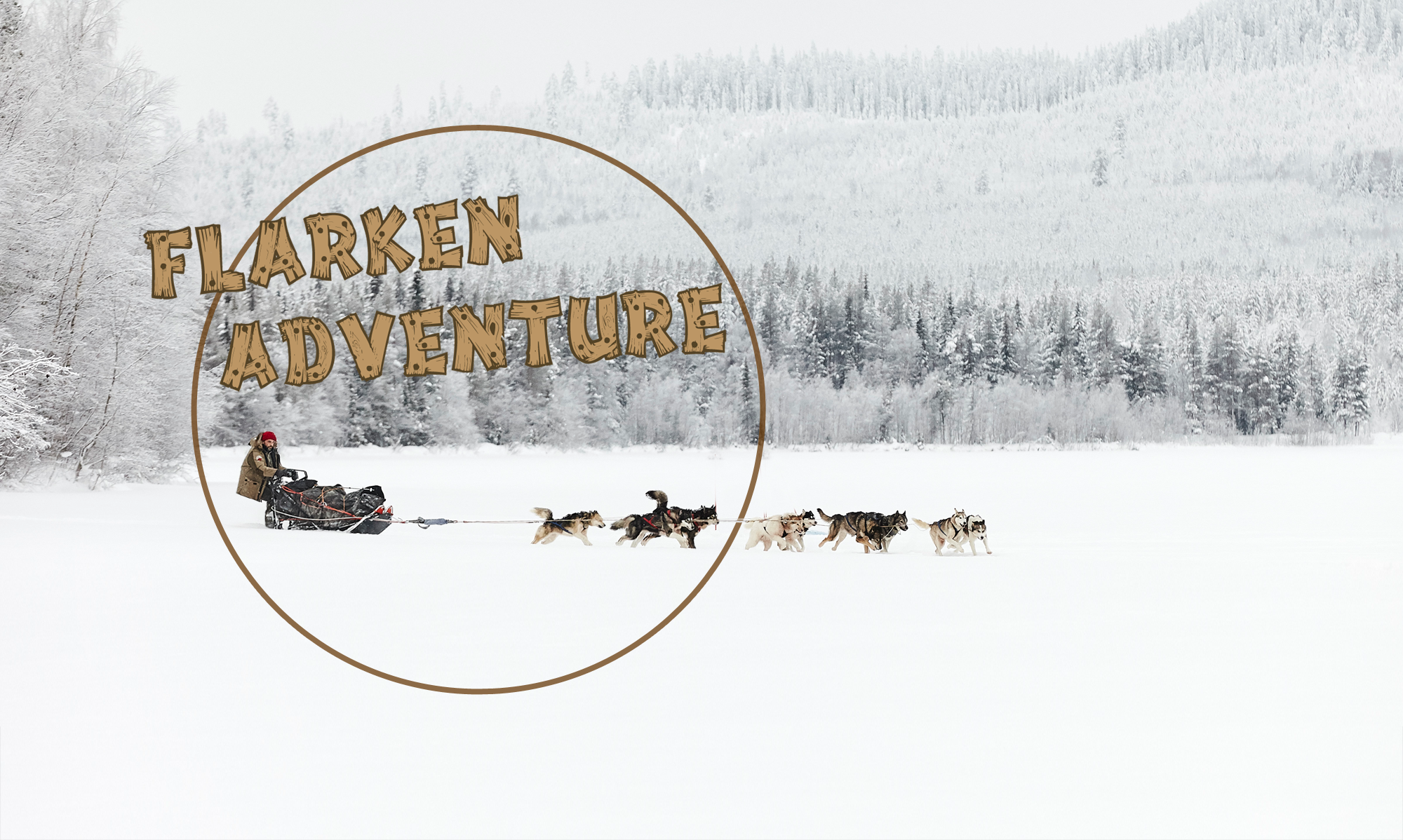Dog sledding isn’t just a winter activity—it’s an unforgettable experience that blends adventure, tradition, and the incredible bond between humans and dogs. Whether you’re up for a short ride, a day-long lesson, or a multi-day Arctic expedition, dog sledding offers something for everyone. From the thrill of gliding through snow-covered landscapes to meeting the true stars—the dogs themselves—it’s a journey that stays with you.
A Glimpse Into History
Dog sledding dates back thousands of years, serving as the primary means of transportation for nomadic peoples across the Arctic—from Greenland to Siberia. These early sleds, often crafted from whale bones, enabled the Inuit to travel vast distances in search of food and shelter in one of the planet’s harshest climates.
By the late 19th century, dog sleds weren’t just survival tools—they became vital for exploration. Adventurers began using them to push deeper into uncharted Arctic regions. And although snowmobiles started replacing sled dogs in the 1970s, many remote communities still depend on these loyal animals for daily life.
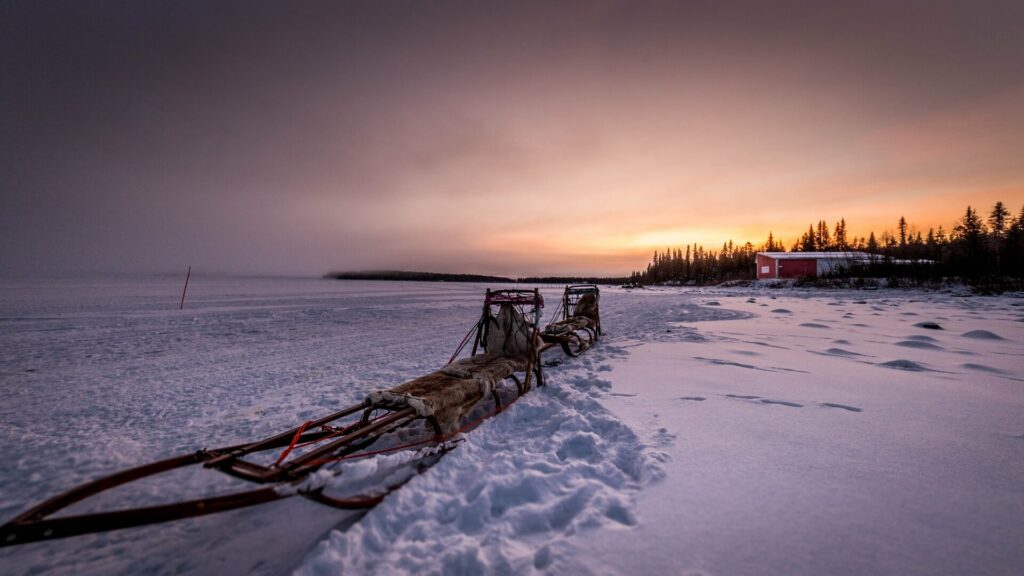
Dog Sledding and the Gold Rush
The Gold Rush of the 1890s catapulted dog sledding into the spotlight. When gold was discovered in Dawson, Canada, thousands of would-be prospectors flocked north, often ill-prepared for the brutal conditions.
Their journey began with a boat trip to Alaska, followed by a grueling trek over the White Pass or Chilkoot Pass. After surviving blizzards, icy trails, and avalanches, they reached Lake Bennett, built rafts, and continued down the Yukon River—risking it all to reach the goldfields.
To ensure survival, the Canadian government required each prospector to bring at least a year’s worth of supplies—about 500 kg of food plus clothing, tents, and tools—totaling nearly a ton. Hauling this cargo over treacherous terrain often took dozens of trips. Soon, dogs became essential helpers, sparking a boom (and black market) in dog trading across Alaska.
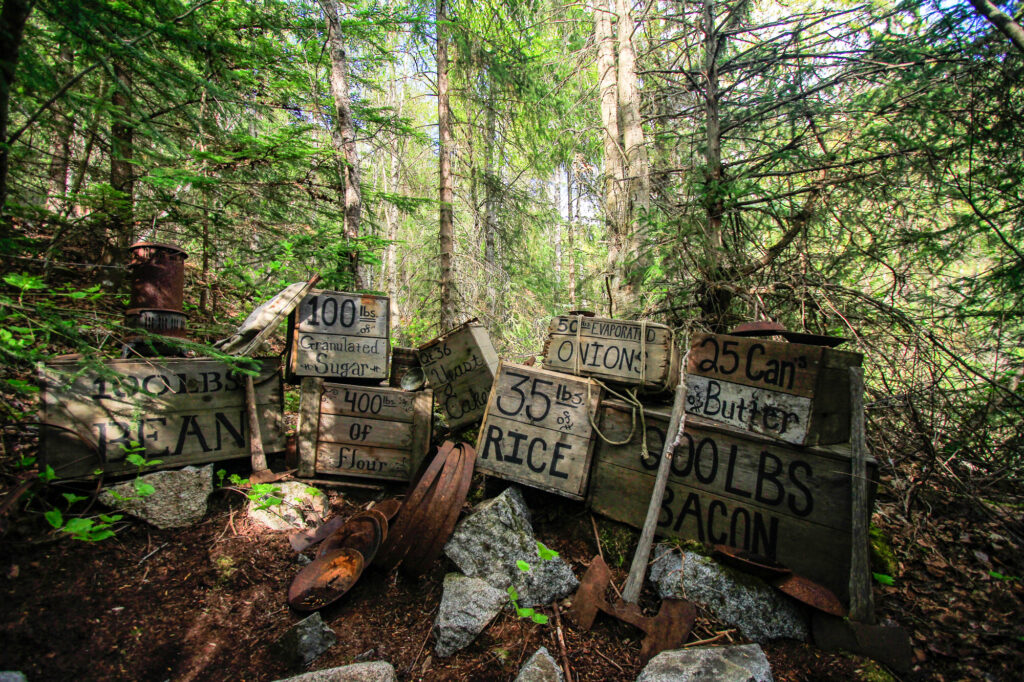
From Survival to Sport
Once the gold dried up, many adventurers returned home—but some stayed. They’d become skilled mushers, breeders, and sled handlers. These pioneers laid the foundation for modern dog sledding, turning it from a necessity into a passion.
By selectively breeding strong, fast northern dogs like the Alaskan Malamute, mushers created the Alaskan Husky—a powerhouse of endurance and speed. Dog sledding evolved into a competitive sport and a beloved pastime.
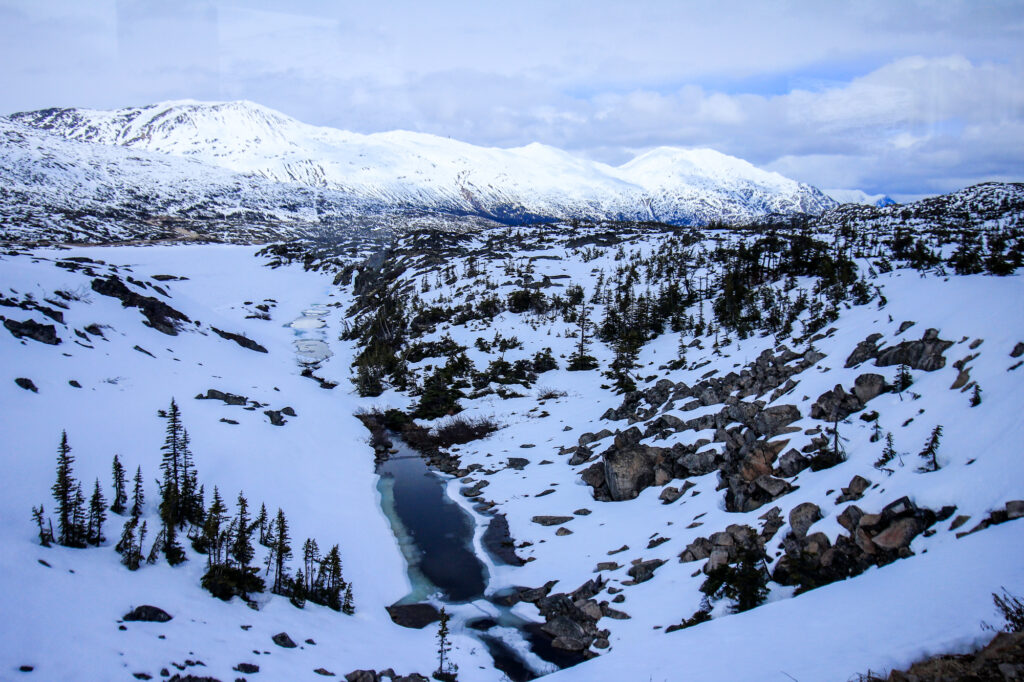
A Unique Adventure for Every Travele
Today, dog sledding is a sought-after activity for thrill-seekers and nature lovers alike. Whether you’re riding as a passenger or learning to drive your own team, there’s an option to fit your schedule, fitness level, and sense of adventure:
- Short scenic rides (30–60 minutes)
- Half-day or full-day experiences where you can take the reins
- Multi-day expeditions into the heart of the wilderness
And the fun doesn’t stop when the snow melts. In warmer months, try:
- Cani-hiking (hiking with a dog)
- Canicross (trail running with a dog)
- Dog scootering or bikejoring
- Skijoring in winter (being pulled on skis by dogs)
No matter the activity, what stands out most is the deep connection formed with these intelligent, eager, and affectionate dogs.
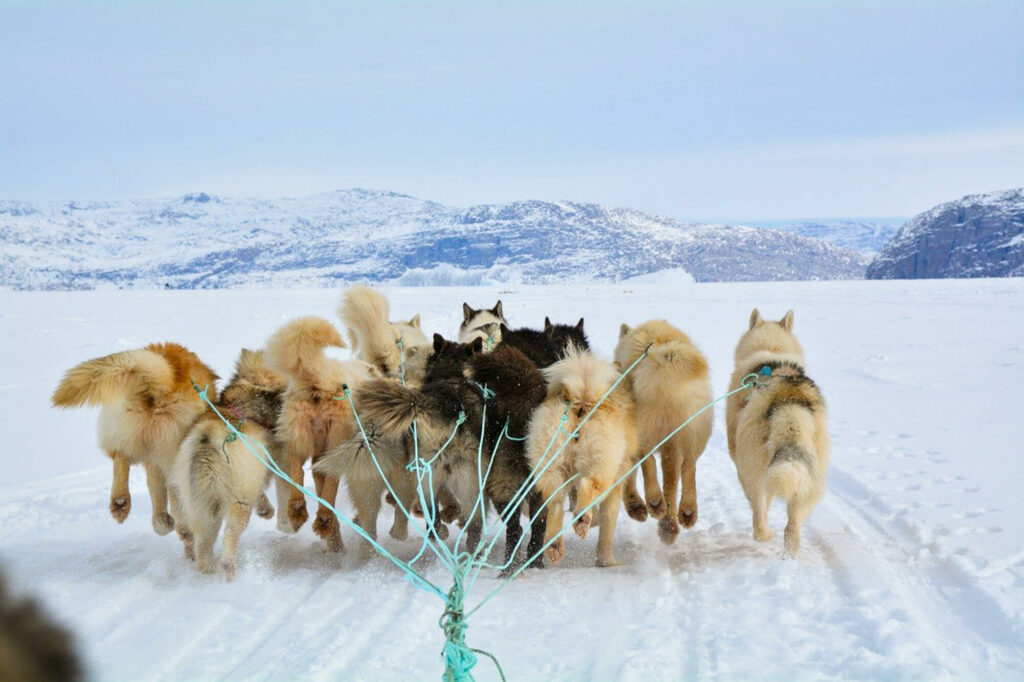
Inside the Dog Team
Each dog in a sled team has a distinct role based on strength, speed, and personality. Positions are flexible and chosen with care:
- Lead Dogs: The brains of the operation—smart, focused, and responsive to commands.
- Swing Dogs: Set the rhythm and help navigate turns.
- Team Dogs: The powerhouse pullers in the middle.
- Wheel Dogs: Closest to the sled; the strongest and steadiest of all.
Dogs are usually paired for compatibility, but in Greenland, Inuits use a fan formation to reduce the risk of the whole team falling into a crevasse—a clever adaptation to local terrain.
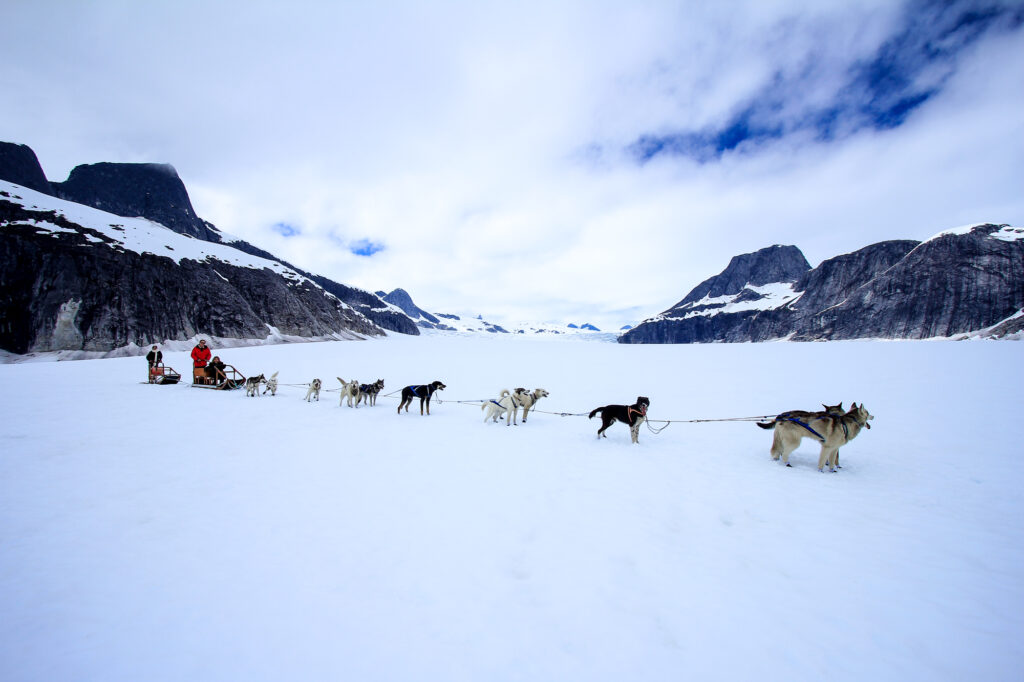
Where to Go Dog Sledding
In France, most sledding experiences are short, seated rides—popular in ski resorts. For something more hands-on, consider Sentiers Nordiques in the Jura for sled-driving and longer tours.
Further afield, you’ll find rich sledding traditions and expansive trails in:
- Lapland (Sweden, Finland, Norway)
- Canada and Alaska
- Mongolia (with Wind of Mongolia)
When booking, look beyond the itinerary. A responsible operator should prioritize dog welfare. Ask about how the dogs live, how they’re cared for when sick or retired, and whether ethical practices are followed.
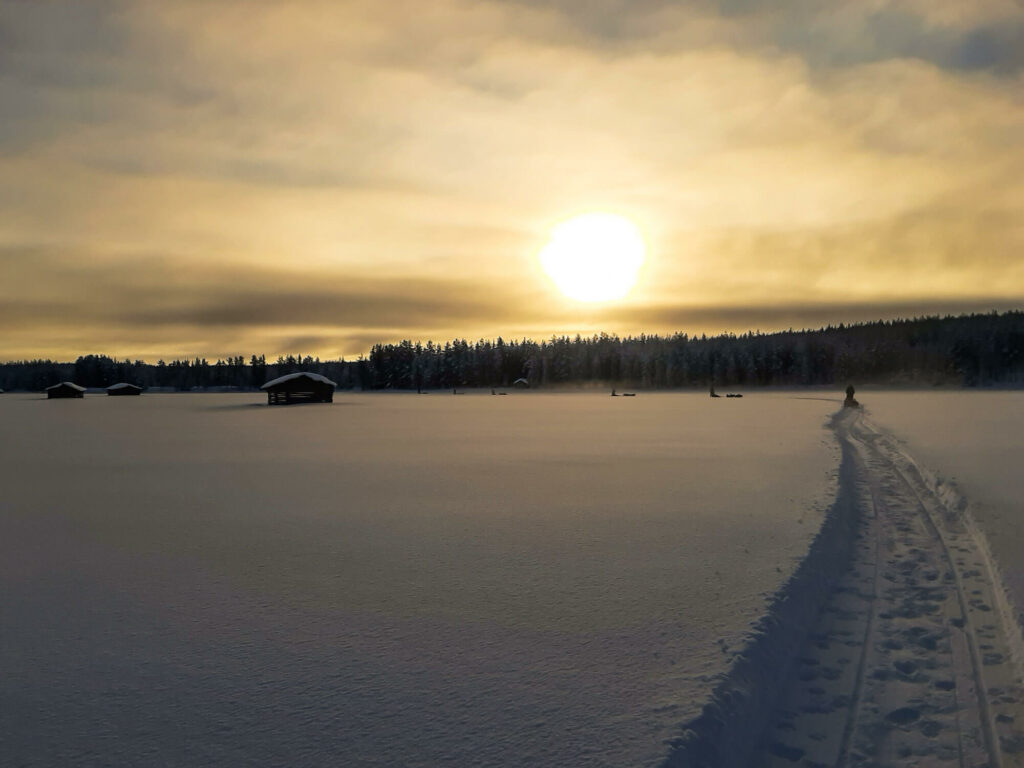
Gear Up and Know What to Expect
Dog sledding is a cold-weather activity, so dressing properly is key. Choose:
- Warm, layered clothing that allows movement
- Avoid down jackets/pants—dog claws can easily tear them
Fitness requirements vary. Short rides are suitable for all ages and abilities, but longer trips require good physical condition. Trekking at -30°C and sleeping in a tent or under the stars is a far cry from milder day trips. Know what you’re signing up for.
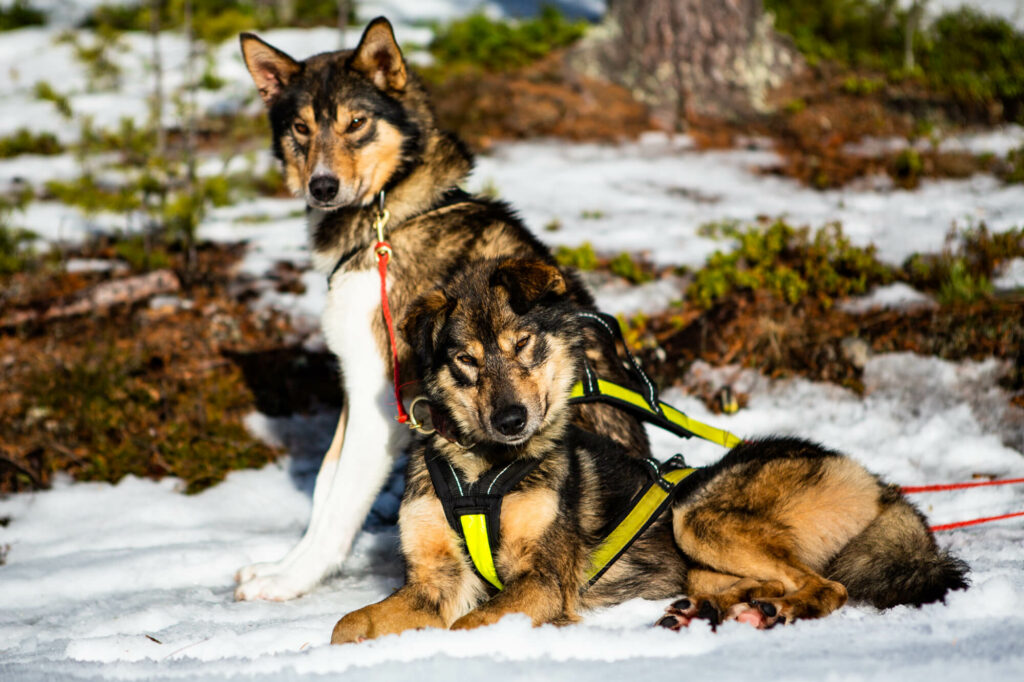
A Once-in-a-Lifetime Experience
With its breathtaking landscapes, physical challenges, and soulful moments with your dog team, dog sledding is more than an activity—it’s a story you’ll tell for years. Whether it’s your first ride or a bucket-list expedition, you’ll return home with wind in your hair, snow in your boots, and a heart full of joy.
READ ALSO :
SLED DOG BREEDS: THE MAIN ARCTIC WORKING DOGS
This post is also available in:  Français
Français
